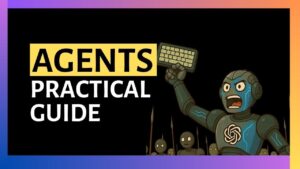Meta AI Introduces Web-SSL: A Scalable, Language-Agnostic Method for Learning Visual Representations

Meta AI Unveils Web-SSL: A New Method for Visual Representation Learning
Meta AI has introduced a cutting-edge approach to visual representation learning known as Web-SSL (Web Self-Supervised Learning). This system is designed to process vast amounts of data without the need for language, making it a highly scalable solution.
What is Web-SSL?
Web-SSL is an innovative method created by Meta AI that enables visual representations to be learned from the internet. Unlike traditional models that require substantial amounts of labeled data, Web-SSL leverages self-supervised learning techniques to create effective representations directly from web images and videos. This method significantly reduces the dependency on manually annotated datasets, which can be costly and time-consuming to compile.
Key Features of Web-SSL
1. Scalability
Web-SSL is built to handle large-scale datasets efficiently. The model can learn from millions of images and videos available on the web, allowing it to continuously improve its understanding and performance in visual representation tasks.
2. Language-Free Approach
One of the standout features of Web-SSL is its language-free design. Traditional models often rely on text descriptions to help understand visual content, but Web-SSL omits this need altogether. By focusing solely on visual data, this model enables learning that is not just faster but also more versatile across diverse cultures and languages.
3. Self-Supervised Learning
The self-supervised learning approach allows the model to generate its own supervision signals from the data. It utilizes large-scale web data by creating predictive tasks — such as predicting missing parts of an image or determining the sequence of visual frames in a video — which helps in enhancing the knowledge of visual concepts without external labels.
How Does Web-SSL Work?
Web-SSL operates through several critical processes:
Data Collection: The model collects images and videos from various sources on the internet, covering a wide range of topics, scenes, and activities.
Image Processing: Once the data is gathered, the system processes the visual content to extract features such as shapes, colors, and movements.
- Learning Representations: The model uses self-supervised techniques to learn and refine its understanding of images by establishing relationships between different visual inputs.
Impact on AI Research and Development
1. Enhanced Application in Vision Tasks
By offering a reliable and scalable method for learning visual representations, Web-SSL opens new doors for advancements in various AI applications, including:
- Image and Video Recognition: Enhanced accuracy and speed in identifying and categorizing visual content.
- Autonomous Vehicles: Improved capabilities for understanding and navigating through complex visual environments.
- Augmented Reality: Better integration of virtual elements with real-world environments through improved visual recognition.
2. Reduces Barriers in Development
Web-SSL lowers the barriers to entry for researchers and developers who may not have access to extensive labeled datasets. Its efficiency opens a pathway for innovative applications and research that were previously limited by data availability.
Collaborations and Future Goals
Meta AI is likely to pursue collaborations with other research institutions and organizations to further refine and implement the Web-SSL framework. Future goals may include expanding its capabilities to encompass a broader range of visual and sensory data, enhancing its adaptability to varying contexts, and integrating it within other AI systems for comprehensive applications.
By focusing on these advancements, Web-SSL is set to redefine how visual recognition technologies are developed and utilized, paving the way for a new era of AI research and application.






